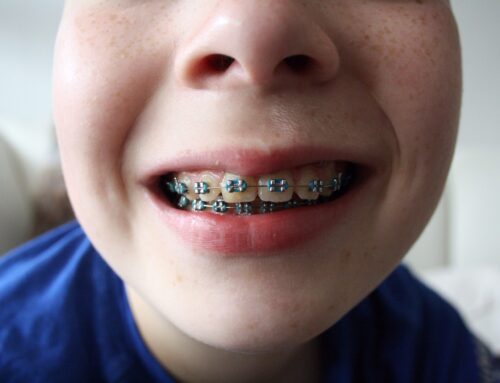Braces: When to Get Them
Some people may require braces early to correct their misaligned, broken, or chipped teeth and maintain oral health. At the same time, some may not need braces at all, especially if they follow a good oral hygiene routine.
However, braces are corrective measures to repair and rectify any crooked, crowded, or even misaligned teeth in your mouth. Braces can constitute different materials, which are suitable for children (as young as seven years of age) and can also work for people of old ages.
What do the Authoritative Organizations Suggest?
Organizations in the US like the American Association of Orthodontists suggest that you should schedule your children’s first dental appointment only when they are above the age of 7. You might find it surprising to know that getting braces is much more common. A mere 35% percent of the adult population has straight teeth that don’t require alignment with braces and other similar dental fixtures.
When to Get Braces?
(Source)
Here are some of the symptoms of oral health and conditions that might suggest the potential need for dental braces under professional care.
- Visibly crowded and crooked teeth
- Biting tongue
- Cuts on the tongue due to edgy teeth
- Clicking jaws (especially when you wake up)
- Certain speech problems (difficulty producing sounds and pronouncing letters due to tongue movement restrictions)
- Trouble flossing or brushing
- Jaw pain after chewing or biting
- Uneven bite (i.e., teeth not closing over one another properly)
Furthermore, there are some more signs and symptoms that might suggest whether your child requires braces.
- Late or early baby teeth loss
- Breathing via their mouth
- Accidental tongue or cheek chewing inside the mouth
- Biting the roof of the mouth
- Jaws that make a clicking sound
- Thumb-sucking after the age of 2 and even using a pacifier
Braces for Children and Adults
Braces constitute metals and stainless steel, whereas the brackets containing them might be of plastic or other similar material. A dental implant (or any other similar treatment) takes place under professional orthodontic care. Following that, your orthodontist may use anesthetics if you have dental anxiety before the application of braces.
It is a costly investment, so do consult your family doctor or general dentist before opting for it. People tend to go for braces either for cosmetic reasons or better oral health. Bear in mind that you can get braces at almost any age (above seven according to AAO) after consultation with your general dentist or doctor.
Conclusion
Orthodontics is a branch of dentistry that covers a lot more than dental braces. How you feel about yourself and perceive your dental image is a great concern for a healthy lifestyle. At Burke and Beckstrom Orthodontics, we offer compassionate care to our dental patients.
Not only do we possess expertise and experience in dental braces for teens and adults, but also several other dental procedures. Feel free to contact us via our official website, where you can find contact details for different locations for your convenience throughout Utah in the US.
Reference Links:
https://bit.ly/3yrgiHM
https://bit.ly/3tVU0dw
https://bit.ly/3uTuE1k
https://mayocl.in/3omzi5k




